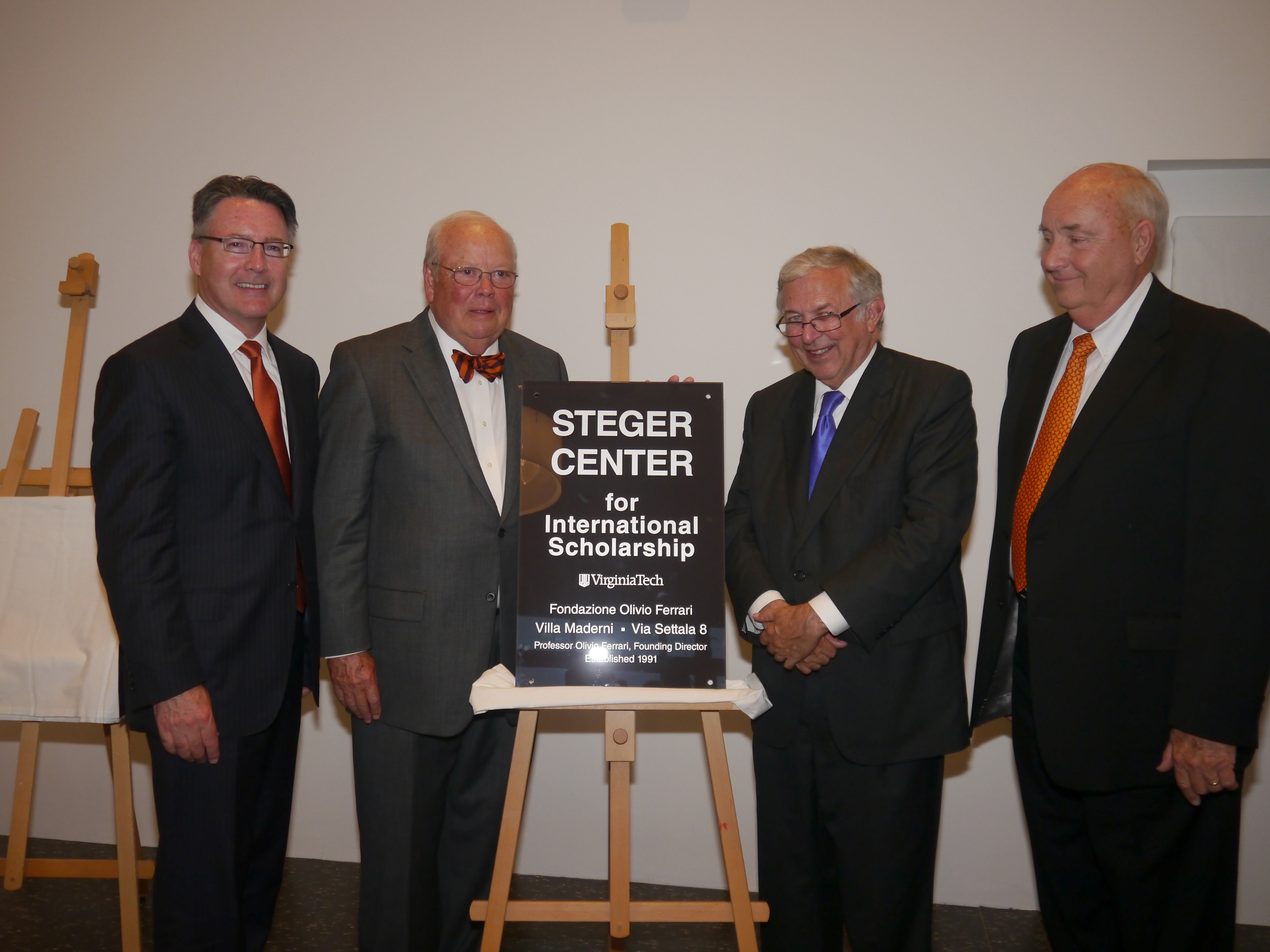Virginia Tech renames its primary facility abroad for former President Charles W. Steger

Virginia Tech’s main international facility, which has been renovated and expanded, recently was renamed for former university President Charles W. Steger in tribute to his vision of broadening the university’s global presence, a defining element of his tenure.
The Steger Center for International Scholarship, formerly known as the Center for European Studies and Architecture, is located in a historic villa in Riva San Vitale, Switzerland.
More than $2.6 million in gifts toward the renovations were made in tribute to Steger by major donors to the university.
“I was surprised, touched, and humbled to learn about this, and am extremely honored,” said Steger, who while serving as dean of Virginia Tech’s College of Architecture and Urban Studies spearheaded efforts over several years to obtain approvals from the Swiss government for the Virginia Tech Foundation’s purchase of the facility.
Steger, who also negotiated the purchase with the former owners of the property, said the success of programs there was largely due to its founding director, Olivio Ferrari, and his widow, Lucy Ferarri, who oversaw programs there herself for several years.
“The program has had many champions over the years,” Steger said, “but we are all especially indebted to Lucy Ferrari and her late husband, Olivio, for the devotion and energy they dedicated to it.”
The Ferraris worked for many years to promote and administer international education for Virginia Tech students. After years of taking students abroad for extended study trips, they helped identify a prime location for a university-owned facility, assisted in its acquisition, and then directed the center’s programs.
The Steger Center serves as the university’s primary campus abroad, providing a base of operations for numerous international education programs. Students live and study in the center while participating in a wide range of semester-long or summer programs at both the undergraduate and graduate level.
During his inaugural address in 2000, Steger stressed the importance of increasing “the international and multicultural perspective” in Virginia Tech’s curricula and campus community. The Switzerland facility featured prominently in such efforts.
The naming of the facility recently was approved by the executive committee of the Virginia Tech Foundation Board of Directors. The university’s Board of Visitors affirmed the renaming.
“Charles is much admired, highly respected, and beloved among those he has led, as well as those he has served,” said Ben Davenport Jr., a former rector of the Board of Visitors, who now chairs the foundation board and made leading contributions toward the renovations, resulting in a wing of the building being named for him and his wife, Betty. “He is the quintessence of our university motto Ut Prosim (That I May Serve), and should be honored as such.”
During Steger’s first full academic year as president, 2001-02, 555 students participated in international education. During the 2012-13 school year, 1,236 students did so. Steger served as Virginia Tech’s president from Jan. 7, 2000, through May 31, 2014.
“As both architecture dean and the university’s 15th president, Charles Steger was a guiding force for international academia and collaboration,” said William Holtzman, a member of the Board of Visitors, who donated generously toward renovations at the Steger Center.
Initiated in October 2012, the renovation and expansion project added 6,200 square feet of new space to the facility, increasing its size to nearly 25,500 square feet. Extensive improvements were made to 5,200 square feet of existing space within the building. The facility sits on slightly more than an acre, and improvements to its grounds included adding a courtyard and renovating space that had been used for parking into space that can be used for programs.
New construction at the center includes a two-story addition. Thanks to the project, the facility has a reconfigured kitchen and can accommodate all faculty and students in residence for meals at once. Renovations to a stable area provided an architectural teaching studio, shop and creative space, display space, a renovated and extended library, and a laundry.
Sustainability and energy efficiency were priorities in the project, which added geothermal heating and cooling, vegetated roofs, and enhanced insulation to the facility.
While the primary motivation for the renovation and expansion was to benefit the students who study at the Steger Center, having additional space, both indoors and out, will allow the center to open its doors to professional workshops, conferences, and meetings, affording students and faculty a venue for greater international engagement and an opportunity to strengthen Virginia Tech’s presence across Europe.
Dedicated to its motto, Ut Prosim (That I May Serve), Virginia Tech takes a hands-on, engaging approach to education, preparing scholars to be leaders in their fields and communities. As the commonwealth’s most comprehensive university and its leading research institution, Virginia Tech offers 240 undergraduate and graduate degree programs to more than 31,000 students and manages a research portfolio of $513 million. The university fulfills its land-grant mission of transforming knowledge to practice through technological leadership and by fueling economic growth and job creation locally, regionally, and across Virginia.








